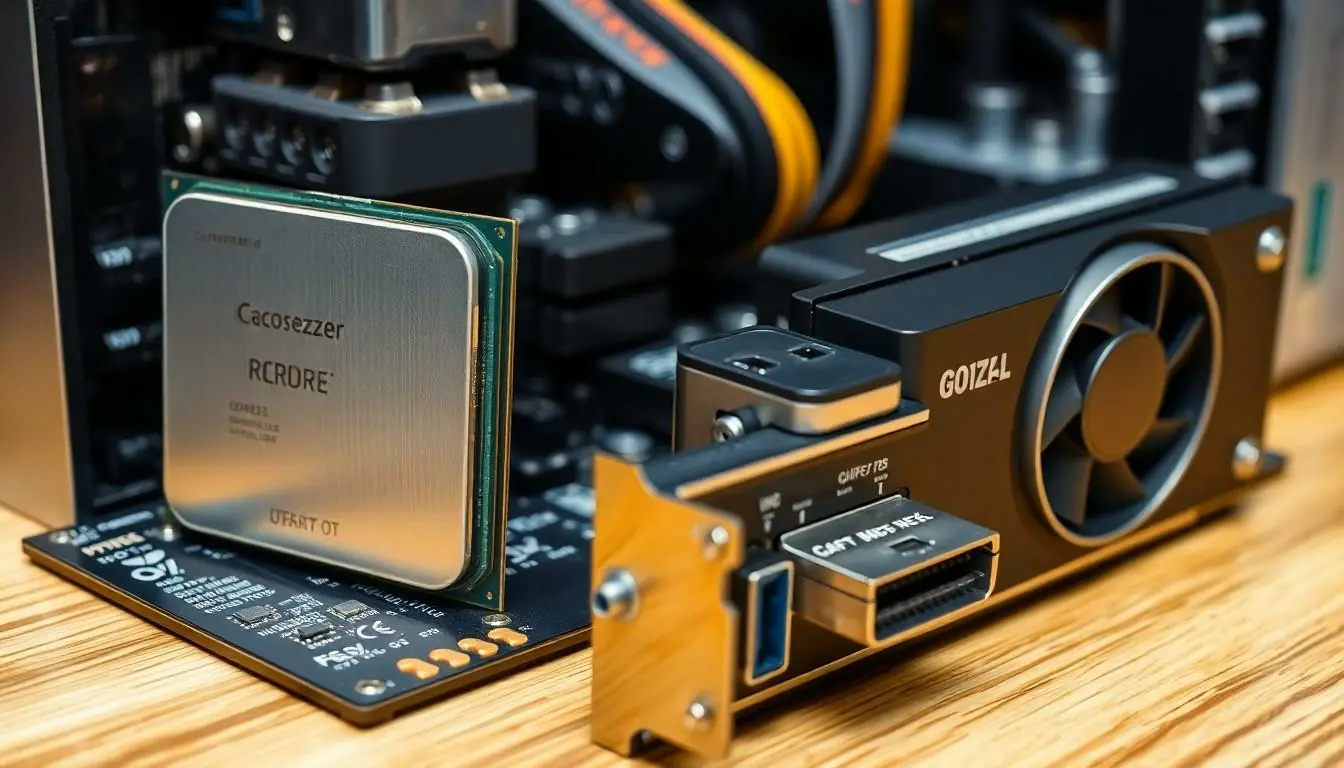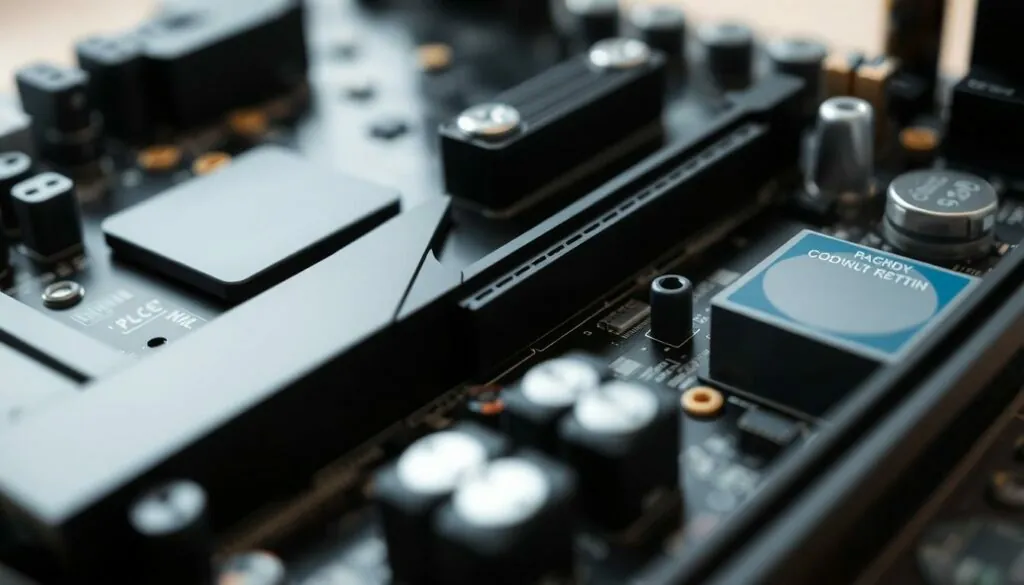Table of Contents
ToggleIn a world where technology evolves faster than a caffeinated squirrel, understanding computer hardware can feel like deciphering an alien language. But fear not! Computer hardware images are here to save the day, transforming complex components into visual masterpieces that even your grandma could recognize.
Overview of Computer Hardware Images
Computer hardware images serve as visual representations of physical components within a system. These images assist in demystifying hardware parts, making them easier for users to identify and understand. Displays of central processing units (CPUs), graphics cards, motherboards, and storage devices clarify their roles and functions.
Visual aids in computer hardware reset preconceived notions of complexity. Users with minimal technical backgrounds find images particularly beneficial. Each component’s layout, connectors, and key features become apparent through high-quality visuals. Familiarity with these images enhances overall knowledge and equips users for effective communication regarding hardware.
Hardware images often accompany technical manuals and online resources. Such integration supports both learning and troubleshooting. Approximately 90% of information processed by the brain is visual, illustrating the importance of using images for comprehension. Users regularly refer to these images when assembling a computer or upgrading components, identifying parts more efficiently.
Specific imagery exists for different computer hardware categories. For example, images of graphics cards showcase cooling solutions and connector options, while motherboard images highlight socket types and RAM slots. Quality images illustrate major trends in design and capability as technology advances.
For educational purposes, computer hardware images feature prominently in tutorials and guides. Images help visualize concepts such as overclocking, system building, and parts compatibility. Providing a clear view of hardware facilitates an engaging learning experience, empowering users to make informed decisions about their technology needs.
Types of Computer Hardware Images

Computer hardware images vary widely and play a crucial role in user understanding. Below are specific types of images that highlight essential components.
Images of Processors
Images of processors illustrate key features like the arrangement of pins and heat spreaders. Each visual representation captures the intricate details of design, enabling users to identify different processor models effectively. For example, images may highlight differences between Intel and AMD processors, showcasing unique features like cooling solutions. High-resolution images emphasize essential characteristics such as socket types and architectural layout, enhancing comprehension for users building or upgrading systems. Overall, these visuals serve as a valuable resource for both educational purposes and consumer choices.
Images of Motherboards
Images of motherboards provide insights into layout and functionality of essential components. Visuals often display the arrangement of RAM slots, PCIe slots, and power connectors. Clear images allow users to recognize motherboard features such as chipset locations and ports for peripherals. For instance, images differentiate between ATX and micro-ATX designs, aiding in the selection process for compatible cases. These visuals also showcase aesthetic elements like RGB lighting, which enhances the appeal for enthusiasts. Thus, motherboard images are vital for understanding the backbone of any computer system.
Images of Graphics Cards
Images of graphics cards highlight their design and technical details crucial for performance evaluation. High-quality visuals showcase features like cooling systems, ports for external displays, and power connector specifications. They differentiate between various models and manufacturers, such as NVIDIA and AMD, clarifying specific designs and capabilities. Clear imagery assists users in recognizing important aspects like GPU architecture and memory configurations, impacting gaming and design experiences. Engaging graphics card images act as essential tools for both novice builders and seasoned gamers alike.
Importance of Computer Hardware Images
Understanding computer hardware complexity increases with clear visual representations. These images bridge the gap between intricate technology and user comprehension.
Enhancing Understanding of Components
Computer hardware images play a crucial role in enhancing understanding. Users identify distinct components such as CPUs and graphics cards more easily through visuals. Each image highlights unique features like pin arrangements and connector types. Recognizing different models, including Intel and AMD, becomes straightforward with this clarity. Visual aids simplify learning, transforming complex layouts into digestible information. By presenting features in a comprehensive manner, images empower users to make informed decisions about their hardware choices.
Supporting Technical Documentation
Technical documentation benefits significantly from the inclusion of hardware images. Manuals and online resources integrate visuals to clarify instructions, aiding users in troubleshooting processes. Each image serves as a reference point, making it easier to follow detailed specifications and assembly steps. High-quality visuals reduce the chances of user error during installations or upgrades. Providing clear representations helps users navigate technical jargon with confidence. Users find troubleshooting more manageable when equipped with visual context, leading to a better overall experience with technology.
Where to Find Quality Computer Hardware Images
Numerous websites offer high-quality images of computer hardware. Stock photo sites like Shutterstock and Adobe Stock feature extensive libraries that include detailed visuals of components. Specific technology-focused platforms, such as Tom’s Hardware or TechSpot, provide original images alongside product reviews.
Forums dedicated to tech enthusiasts, including Reddit and Linus Tech Tips, often showcase user-submitted images, highlighting real-life setups and hardware modifications. Manufacturers’ websites typically present official images that accurately depict their products, showcasing components such as CPUs, GPUs, and motherboards.
Educational resources frequently include diagrams and images to enhance understanding. Websites like HowStuffWorks and PCMag provide visual references for complex hardware topics, aiding users in grasping intricate details easily. Instructional videos on platforms like YouTube can also serve as visual guides, demonstrating hardware features and installation processes through engaging visuals.
Online marketplaces such as Amazon and Newegg display user-uploaded images along with product listings. User photos can offer authentic insights into real-world use cases and physical dimensions. Image search engines like Google Images facilitate quick access to a variety of hardware images, making it easy to compare items.
Community-driven sites like iFixit provide repair guides accompanied by high-quality images. These resources enable users to visualize aspects of disassembly and part replacement, fostering a hands-on understanding of hardware. Ultimately, diverse online sources empower users to access quality computer hardware images that cater to varied learning styles and preferences.
Computer hardware images play a vital role in demystifying the complexities of technology. By providing clear visual representations of components, they empower users to make informed decisions and enhance their understanding of hardware. Whether it’s identifying a CPU or comparing graphics cards, these images transform intricate details into accessible information.
With a variety of sources available for high-quality visuals, users can easily find the right images to support their learning and troubleshooting efforts. As technology continues to evolve, the importance of these images will only grow, ensuring that everyone can navigate the world of computer hardware with confidence.




